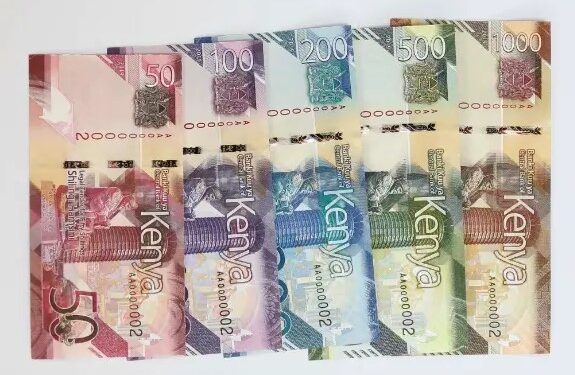The sub-Saharan African currencies have suggested a mixed performance, with currencies like the Kenyan shilling and Zambian kwacha appreciating at an unprecedented pace, which is an indication of favorable economic conditions and effective monetary policies.
The performance of these currencies are also expected to vary significantly in the coming months, influenced by economic recovery, geopolitical factors, and political influences within.
In the Q2 of 2024, Kenyan shillings recorded a stellar performance against the dollar, following a heartbreaking output that deeply affected investors in the manufacturing industry, with a section of businesses which relies heavily on importation.
The following are the top 10 performing currencies in Sub-Saharan Africa in 2024:
- Kenyan Shilling (KES)
Current Exchange Rate (1 USD): 128.94
The Kenyan shilling was introduced in 1966, replacing the East African shilling at par—following the establishment of the Central Bank of Kenya two years into independence of Kenya. Prior to Kenyan shilling, the Indian rupee and Maria Theresa Thaler became the prominent ones in the late 19th century.
The Kenyan shilling is the strongest currency in East Africa and is propelled to appreciate further, with a year-to-year increase of approximately 17% as of mid-2024. The interest rate hike by the Central Bank of Kenya largely contributed to currency stability and other actions such as the repayment of Eurobond.
- Zambian Kwacha (ZMW)
Current Exchange Rate (1USD): 17.50
The kwacha has shown resilience with a year-to-year appreciation of about 14%, significantly attributed to the increased foreign exchange liquidity and positive market positioning. The kwacha was introduced in 1968, replacing the Zambian pound at a rate of 2 pounds per kwacha. The currency’s confidence is as a result of the recount economic reforms and stabilization efforts by the government.
- Ghanaian Cedi (GHS)
Current Exchange Rate (1 USD): 11.20
First introduced in 1965 and subsequently replacing the Ghanaian pound at a rate of 2.2 cedis per pound, the cedi took a downfall leap in the post-Covid-19 era owing to the increased demand for the currency as businesses resumed operations and importation, leading to limited foreign exchange reserves.
By February 2022, cedi was one of the worst-performing currencies in Africa, depreciating by 7.6% in just the first two months of that year. Cedi is currently expected to stabilize, a recovery forecast attributed to the improved economic conditions and investor confidence.
- Nigerian Naira (NGN)
Current Exchange Rate (1USD): 1695.98
The Nigerian naira made a rebound appreciation by a around 23% in April 2024 alone, reaching N1,150/USD after breaching N1,600/USD mark for the first time. The meager recovery was attributed to stronger foreign exchange inflows following a series of responses Central Bank of Nigeria aimed at stabilizing the economy.
Introduced in 1973, the naira replaced the pound at a rate of 2 naira for 1 pound and has since faced numerous challenges, including devaluation and inflationary pressures, particularly due to Nigeria’s dependence on oil exports.
- Tanzanian Shilling (TZS)
Current Exchange Rate (1USD): 2340.00
The Tanzanian shilling was introduced in 1966, replacing the East African shilling at par. The currency is under the monitorship of the Bank of Tanzania. The government of Tanzania has implemented key actions aimed at maintaining the currency value. The government aims to reduce reliance on foreign currencies, particularly the US dollar. Effective from July 2024, the policy required that all tourism-related fees and charges be paid in Tanzanian shillings.
- Botswana Pula (BWP)
Current Exchange Rate (1USD): 13.25
First introduced in 1976, the pula replaced the South African rand at a rate of 1 pula per rand. The term ‘pula’ means ‘rain’ in Setswana, symbolizing its importance as a precious resource. The pula is one of the strongest currencies in Africa against the major benchmarking currencies, such as the US$ and Euro, which reflects the country’s economic stability and prudent fiscal management.
- Namibian Dollar (NAD)
Current Exchange Rate (1 USD): 18.50
The Namibian dollar was introduced in 1993, replacing the South African rand at par after Namibia gained independence from South Africa. The currency’s success is due to a combination of effective monetary policy and a viable economic environment, and it’s pegged to the South African rand (ZAR). The rand’s persistence stability against the dollar extends to the Namibian dollar, which is key to maintaining investor confidence and subsequent reduction in the currency volatility.
- Mauritian Rupee (MUR)
Current Exchange Rate (1USD): 44.00
The Mauritian rupee is one of the oldest currencies in Africa and has been in use for more than a century. The Mauritina rupee was introduced in 1876 by the British colonial government, replacing the Indian rupee at a rate of 5 rupees per sterling pound. Mauritius gained independence in 1968, and the currency has remained in stable circulation, heavily attributed to tourism, which is their major economic backbone.
- Seychellois Rupee (SCR)
Current Exchange Rate (1USD): 13.50
Seychellois Rupee is one of the strongest currencies in Africa. Introduced in 1914, the currency replaced the British pound at par. Seychelles has adopted various monetary policies that are key to influencing the currency value since attaining independence from Britain in 1976. Just like the Mauritian, the Seychellois rupee is a testament to it’s robust tourism sector, crucial to its economic growth and currency stability.
- South African Rand (ZAR)
Current Exchange Rate (1USD): 18.50
The South African economy is among the biggest in Africa, and its currency has stood strong since its inception in 1961. The Rand replaced the South African pound at a rate of 2 rands per pound. The currency has maintained its status as the key player in regional trade despite the volatility linked to political and economic factors.







